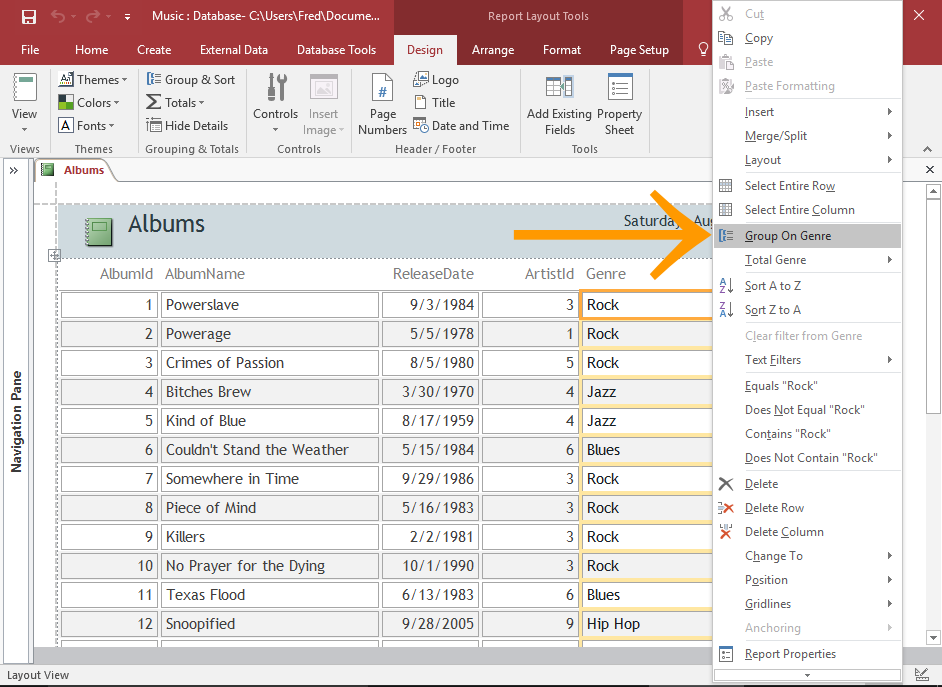
You can also adjust simple things such as the size of the paper that you are using to print, the margins for your report, the orientation, the number of columns, page set up, etc. In the zoom section, you've got a view for one page, two pages or if you have a longer report, you can view four pages at once, eight pages or twelve pages. You also have some buttons on the Print Preview tab that appear automatically when you switch to Print Preview.

Using the tools on the lower right-hand corner, you can zoom in or zoom out. If you want to view what this report will actually look like, in Print Preview, you can go back to the View button and click on Print Preview to see what this report would look like when printed either on paper or as a PDF. Let us now change the Title of the report and give it another name.Ĭlick on the save icon to save your report.Įnter a name for your report and click Ok.


If the fields are contained in more than one table, you need to use one or more queries as the record source. If the fields that you want to include all exist in a single table, use that table as the record source. The tables or queries that provide the underlying data are also known as the report's record source. For example, you can create a simple report of phone numbers for all your contacts.Ī report consists of information that is pulled from tables or queries, as well as information that is stored with the report design, such as labels, headings, and graphics. Reports offer a way to view, format, and summarize the information in your Microsoft Access database.
TABULAR LAYOUT ACCESS 2016 HOW TO
In this chapter, we will be covering the basics of reports and how to create reports.


 0 kommentar(er)
0 kommentar(er)
